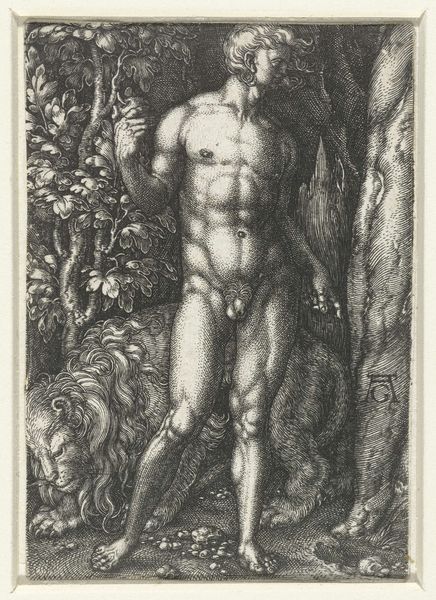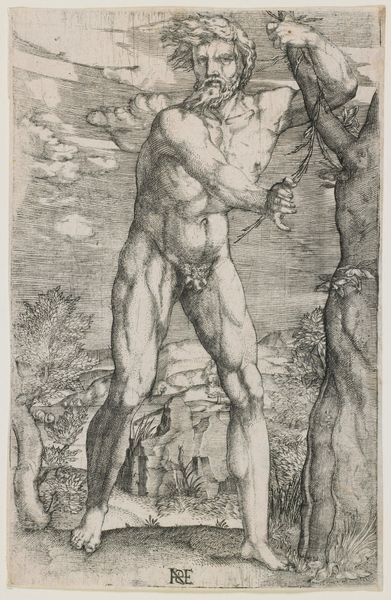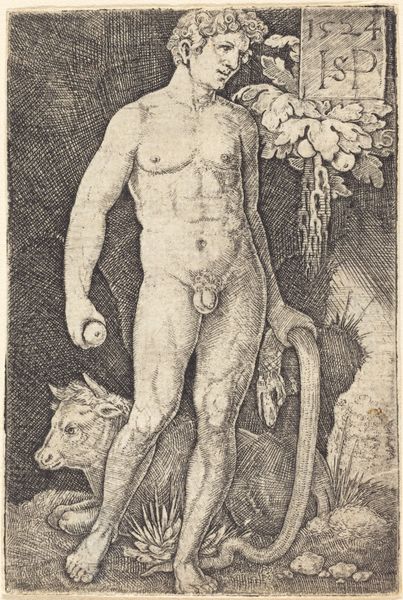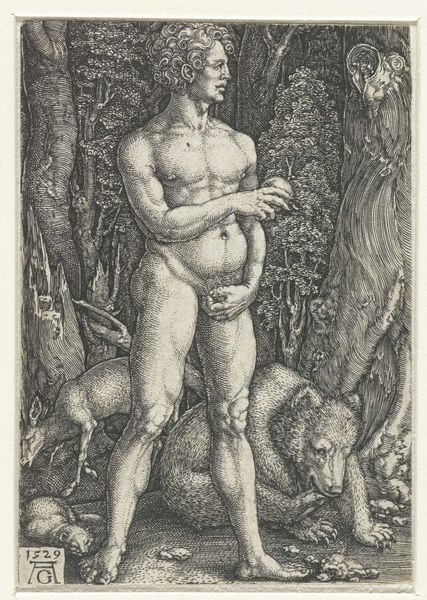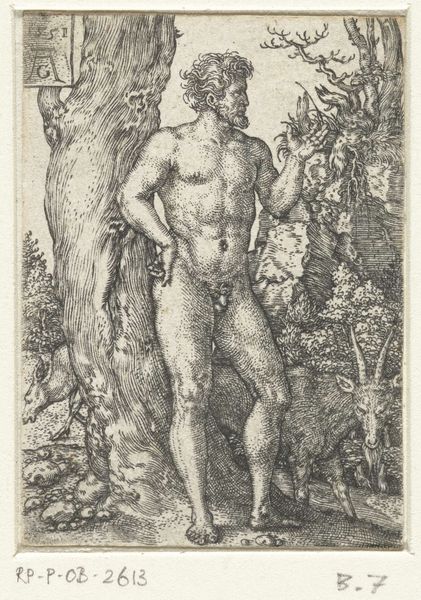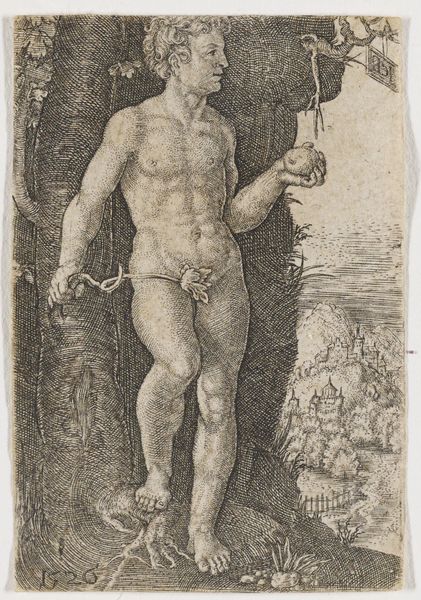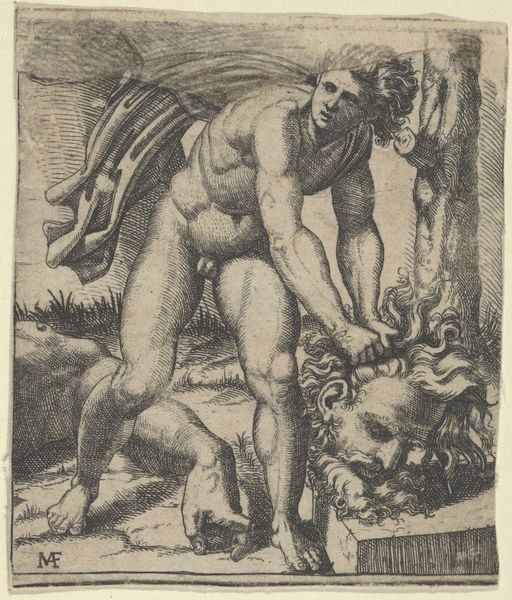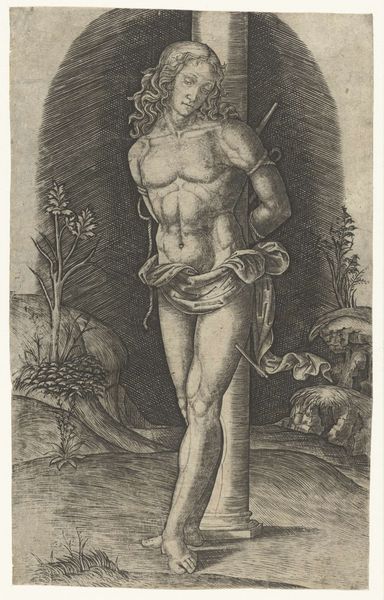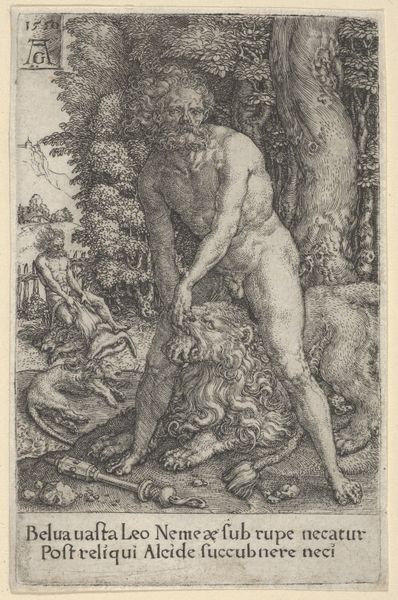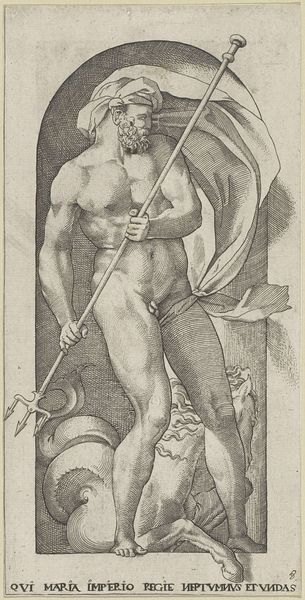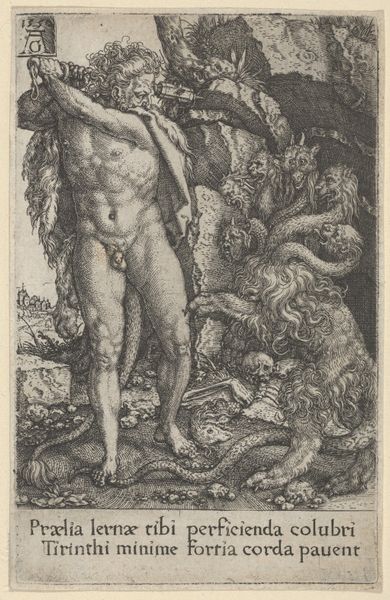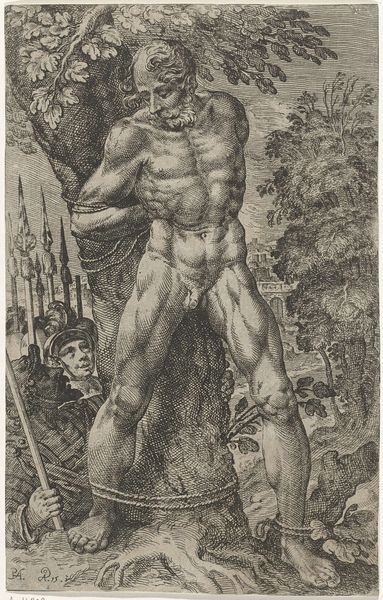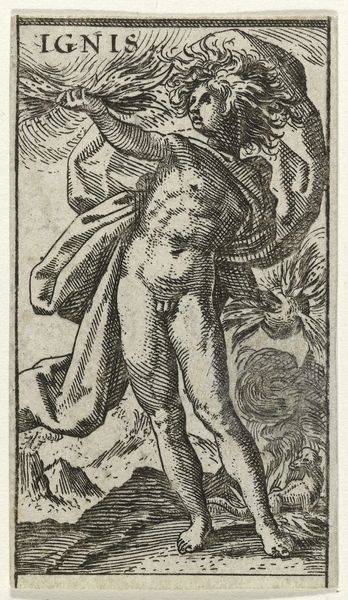
print, engraving
# print
#
charcoal drawing
#
figuration
#
11_renaissance
#
history-painting
#
northern-renaissance
#
nude
#
engraving
Dimensions: height 80 mm, width 53 mm
Copyright: Rijks Museum: Open Domain
Editor: This is "Adam met een appel" by Jacob Binck, made sometime between 1524 and 1569. It's an engraving, currently held at the Rijksmuseum. I’m struck by the almost… industrial quality of the lines. It’s a biblical scene rendered with incredible precision. What's your take on it? Curator: That precision is key. We’re looking at an engraving, a process involving meticulous labor and specific tools. Consider the material itself: metal, ink, paper. The final image is less about divine inspiration and more about skilled craft and the economic realities of printmaking. Editor: Economic realities? Curator: Absolutely. Prints like these were commodities. Binck, through the labor of engraving, created multiples. Each print becomes a portable, reproducible piece that could circulate and generate income. The very act of dissemination through prints democratizes the image, in a way that a painting could not. It’s art produced for a market, engaging in early capitalist modes of production and consumption. Look at the intricate detail. Each line is a deliberate act of labor. What does that labor signify to you? Editor: I see it as showcasing Binck’s skill. But now, knowing the context, I'm thinking about how the act of replicating imagery reshaped art’s function. Curator: Precisely. It challenged notions of originality, authorship and, crucially, made art a more accessible object for broader consumption. These engravings acted as visual currency, shaping ideas through distribution. The material tells a story beyond the religious narrative itself. Editor: That’s really interesting! So, the method transforms the meaning? Curator: It doesn’t replace it, but it definitely layers it. By shifting the focus to the material and process, we understand "Adam met een appel" as both a representation and a product of a particular historical moment. It allows a critical engagement with material production as foundational to artistic meaning. Editor: I see what you mean! The discussion made me think of it less as art, more of a product or cultural artifact. Thanks!
Comments
No comments
Be the first to comment and join the conversation on the ultimate creative platform.
